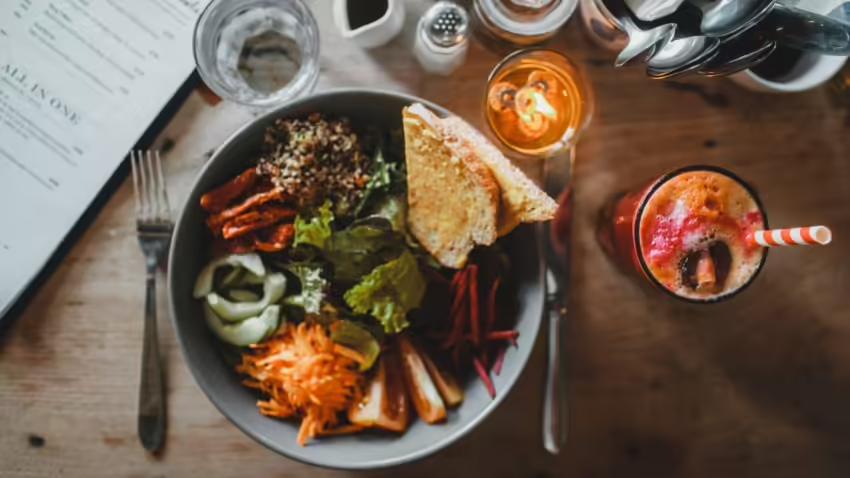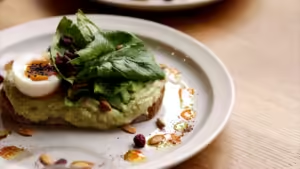Transitioning to a vegan diet can be a rewarding and life-changing decision. Whether you’re motivated by health benefits, environmental concerns, or ethical reasons, adopting a plant-based lifestyle has never been more accessible or delicious. If you’re new to veganism, it might seem daunting, but with the right guidance and a bit of planning, you’ll find it easier than you imagined.
In this blog post, we’ll explore simple tips to help you transition to a vegan diet smoothly. We’ll also discuss why veganism is beneficial for your health and provide practical advice to make your journey enjoyable and sustainable. Plus, I’ll introduce you to my book, “The Active Vegan Cookbook,” which is filled with recipes and tips to support your new lifestyle.
Why Go Vegan?
1. Health Benefits Switching to a vegan diet can offer numerous health benefits, including improved heart health, weight loss, and better digestion. Plant-based diets are rich in essential nutrients, antioxidants, and fiber, which can help lower the risk of chronic diseases like diabetes, hypertension, and certain cancers. Many people also experience increased energy levels and clearer skin after transitioning to a vegan diet.
2. Environmental Impact Adopting a vegan lifestyle significantly reduces your carbon footprint. Animal agriculture is a leading cause of deforestation, greenhouse gas emissions, and water pollution. By choosing plant-based foods, you’re contributing to a more sustainable and eco-friendly planet.
3. Ethical Considerations For many, the decision to go vegan stems from a desire to prevent animal suffering. By avoiding animal products, you take a stand against the inhumane practices often found in factory farming. Veganism aligns with a compassionate lifestyle that respects all living beings.
Tips for Transitioning to a Vegan Diet
1. Start Slow Transitioning to a vegan diet doesn’t have to happen overnight. Begin by gradually reducing your intake of animal products. You might start with meatless Mondays or swap out dairy milk for plant-based alternatives like almond or oat milk. Taking small steps can make the process less overwhelming and more manageable.
2. Educate Yourself Learn about vegan nutrition to ensure you’re getting all the essential nutrients your body needs. Key nutrients to focus on include protein, iron, calcium, vitamin B12, and omega-3 fatty acids. Incorporate a variety of whole foods, such as legumes, nuts, seeds, fruits, vegetables, and whole grains into your diet.
3. Experiment with Recipes Exploring new recipes is one of the most exciting parts of transitioning to a vegan diet. There are countless vegan cookbooks, blogs, and YouTube channels dedicated to delicious and easy-to-make plant-based meals. My book, “The Active Vegan Cookbook,” is a great resource filled with nutrient-packed recipes that will keep you energized and satisfied.
4. Find Vegan Alternatives Nowadays, there are vegan alternatives for almost every animal product you can think of. From vegan cheese and plant-based meats to egg substitutes and dairy-free ice cream, you won’t miss out on your favorite foods. These alternatives can make the transition smoother and help you stick to your new diet.
5. Plan Your Meals Meal planning is crucial for staying on track with a vegan diet. Dedicate some time each week to plan your meals and snacks. This will help you avoid the temptation of non-vegan options when you’re hungry and pressed for time. Batch cooking and meal prepping can also save you time during busy weekdays.
6. Join a Community Surround yourself with like-minded individuals who can offer support and encouragement. Join vegan social media groups, attend local vegan meetups, or participate in online forums. Sharing your journey with others can provide motivation and make the experience more enjoyable.
7. Be Kind to Yourself Transitioning to a vegan diet is a significant change, and it’s okay to make mistakes along the way. Don’t be too hard on yourself if you accidentally consume animal products or find it challenging to stick to the diet. Remember, it’s about progress, not perfection.
Simple Vegan Meal Ideas
To get you started, here are some easy and delicious vegan meal ideas:
Breakfast:
- Smoothie bowl with fruits, nuts, and seeds
- Oatmeal topped with fresh berries and almond butter
- Avocado toast with cherry tomatoes and hemp seeds
Lunch:
- Quinoa salad with chickpeas, cucumber, and tahini dressing
- Lentil soup with a side of whole-grain bread
- Veggie wrap with hummus, spinach, and roasted vegetables
Dinner:
- Stir-fried tofu with broccoli and brown rice
- Spaghetti with marinara sauce and vegan meatballs
- Buddha bowl with sweet potatoes, black beans, and guacamole
Snacks:
- Fresh fruit with a handful of nuts
- Carrot sticks with hummus
- Vegan yogurt with granola
Frequently Asked Questions
Will I get enough protein on a vegan diet? Yes, you can get plenty of protein from plant-based sources. Foods like lentils, chickpeas, tofu, tempeh, quinoa, nuts, and seeds are all excellent sources of protein.
Do I need to take supplements? While a well-planned vegan diet can provide most nutrients, some people may benefit from supplements, particularly vitamin B12, vitamin D, and omega-3 fatty acids. Consult with a healthcare professional to determine your specific needs.
Is it expensive to eat vegan? Eating vegan can be affordable if you focus on whole foods like beans, grains, and vegetables. Processed vegan products can be more expensive, but they are not essential for a healthy vegan diet.
What about eating out? Many restaurants now offer vegan options, and you can often modify dishes to be vegan-friendly. Look for plant-based items on the menu or ask the server for recommendations.
How do I handle social situations and holidays? Communicate your dietary preferences to friends and family in advance. Offer to bring a vegan dish to share, and don’t be afraid to ask about ingredients. Most people are supportive and willing to accommodate your choices.
Transitioning to a vegan diet is a journey worth embarking on. The health benefits, positive environmental impact, and ethical considerations make it a fulfilling and meaningful lifestyle choice. Remember to start slow, educate yourself, experiment with recipes, find vegan alternatives, plan your meals, join a community, and be kind to yourself along the way.
For more inspiration and delicious vegan recipes, check out my book, “The Active Vegan Cookbook,” available on Amazon. It’s packed with easy-to-make meals that will keep you active and thriving. You can see a preview on my “Lovely Voyages” page.
If you found this post helpful, please like, share, and comment below. I’d love to hear about your experiences and any tips you have for fellow readers. Don’t forget to check out my previous posts for more healthy eating tips, kitchen organization ideas, and quick meal recipes.
Together, we can make the transition to a vegan diet enjoyable and sustainable!
- Quick Breakfasts: Energize Your MorningStarting your day with a nutritious breakfast can make a significant difference in your energy levels and mood throughout the day. But when mornings are hectic, it’s easy…
- Elegant Pastries: Impress with These Beautiful TreatThere’s something undeniably magical about a beautifully crafted pastry — it’s not just a dessert, but a work of art! Whether you’re hosting a fancy dinner party, treating…
- Organizing Your Spices: Tips for an Efficient PantryPicture this: You’re in the middle of preparing your favorite dish, your kitchen smells divine, and everything’s going perfectly—until you realize you can’t find the cumin. Frustration kicks…



